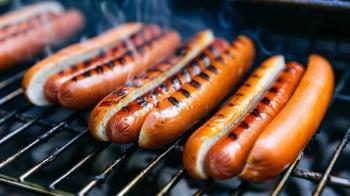
- The Column-09-20-2012
- Volume 8
- Issue 17
Mysterious mochata
Understanding and identifying the numerous compounds that make-up a scent is essential to artificial flavour creation. When attempting to create a strawberry fragrance, sensory properties are of fundamental importance.
Understanding and identifying the numerous compounds that make-up a scent is essential to artificial flavour creation. When attempting to create a strawberry fragrance, sensory properties are of fundamental importance. However, with the development of consumer demand for the ‘perfect’ strawberry, selective breeding of strawberry varieties has favoured optimal colour, size, texture and shelf life, neglecting sensory properties. This has led scientists to look to the past to rediscover varieties long forgotten.
Up until the 19th century, the formerly famous wild musk strawberries (Fragaria mochata), so-named after their strong distinctive smell, were commonly planted alongside woodland strawberries (Frugaria vesca). However, with the introduction of the garden strawberry (Fragaria x ananassa), musk strawberries reduced in popularity due to their unfavourable characteristics of bearing fruit only once a year, small size and uneven colouring.
With the aim of identifying what gives a musk strawberry its unique sensory properties, a group of scientists from Austria set about characterizing the volatile olfactory compound (VOC) profile.1 Wild-growing and naturally ripened musk strawberries were collected from two highland sites in Slovakia in two different seasons and characterized onsite by two flavourists. The VOC profile was extracted immediately following characterization using solid-phase extraction (SPE), and subsequently analysed by gas chromatography–mass spectroscopy (GC–MS) and gas chromatography–olfactometry (GC–O). For a comparison, woodland strawberries were also collected from the same area and analysed.
The investigators identified more than 100 VOC’s, with a notably higher level of mesifurane within musk strawberries compared with woodland strawberries. This could potentially lead to the development of a new generation of strawberry flavourings for use within industry.
1. Ján Pet’ka, Erich Leitner and Baskaran Parameswaran, Flavour and Fragrance Journal, 27,273–279 (2012).
Articles in this issue
about 13 years ago
Phenomenex Create New Companyabout 13 years ago
Crashing Back to Earthabout 13 years ago
Agilent acquire Aurora SFC Systemsabout 13 years ago
Fishy taleabout 13 years ago
Turning the Spotlight on Capillary Electrophoresis.about 13 years ago
HILIC Stationary Phases: Polymer- versus Silica-Based ColumnsNewsletter
Join the global community of analytical scientists who trust LCGC for insights on the latest techniques, trends, and expert solutions in chromatography.




